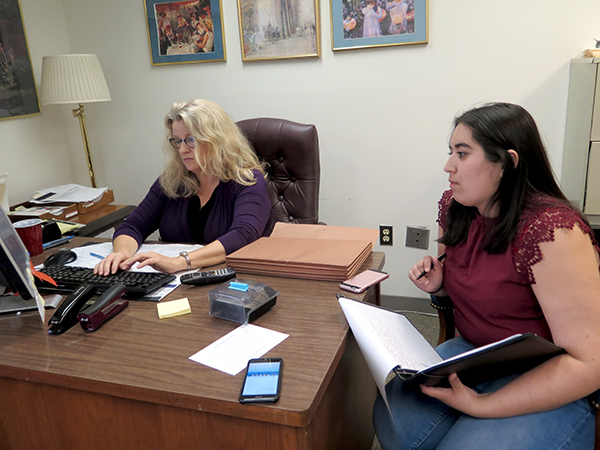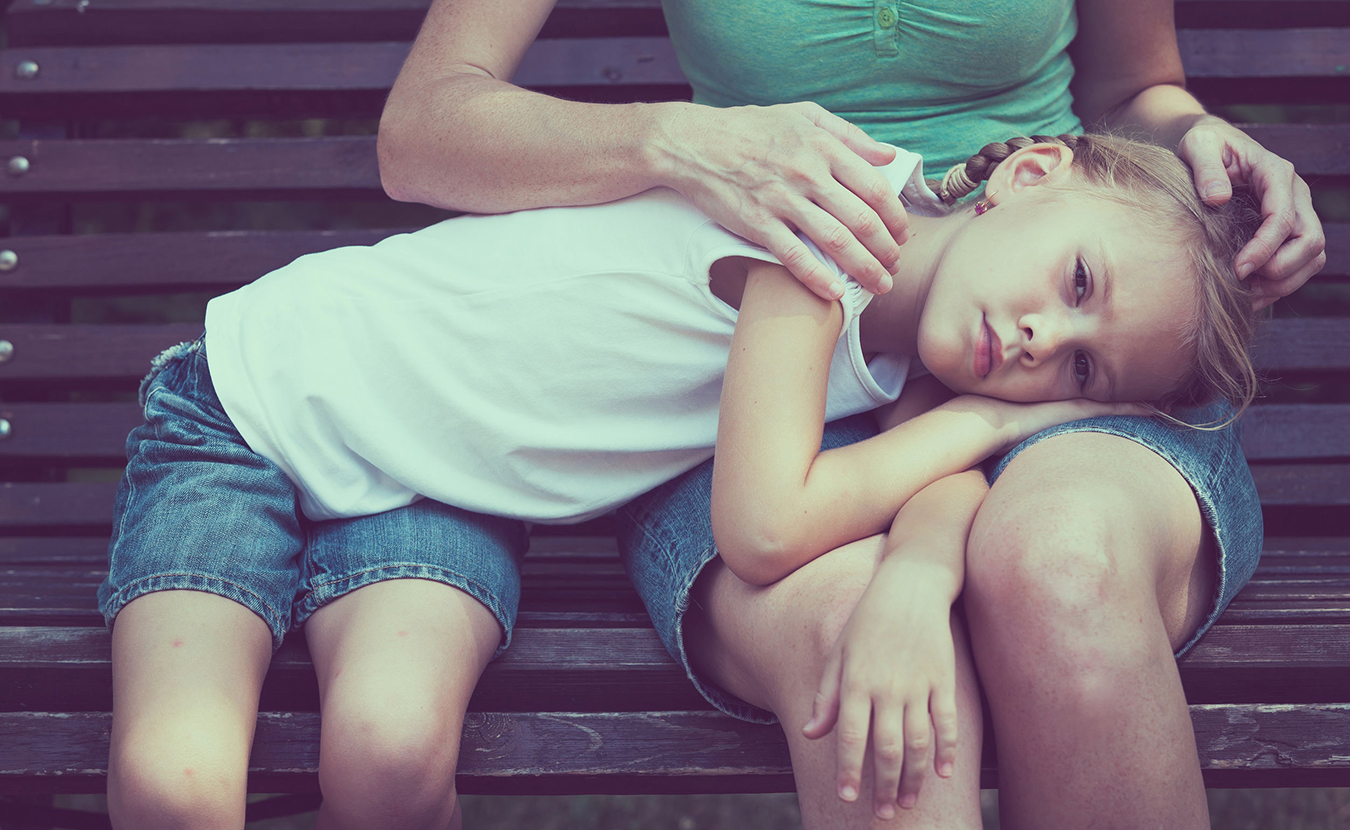Painkillers, heroin, methamphetamines, cocaine, and fentanyl are sweeping the country. And addiction to them has produced an abundance of displaced children who, having lost their parents — whether physically or emotionally — to addiction and drug use or overdose, are now living with foster families or relatives. The U.S. Department of Health and Human Services’ most recent data, which was published in October 2017 for the 2016 fiscal year, reports that 437,000 minors entered the foster care system across the country. The reports show a steady yearly increase in cases since 2012, when 397,000 were reported.
There is little statistical data available and, likewise, little research done to determine the emotional impact the crisis has on children. But it is not hard to imagine the anxiety, fear, and trauma felt by a six-year-old who has to call 911 for an unconscious parent, or a seven-year-old left alone with younger siblings.
Abuse, neglect, and abandonment are among the most common reasons why minor children are removed from their homes by a child protection agency. When it has been determined by a court that a parent is unable to properly care for their child or children, then the minors are placed in a foster home, with an average stay of 17 months in the state of Indiana. Foster care is meant to be a temporary solution while the parents are rehabilitating or while the children in the adoption process.

Diane Walker, executive director of District 10 Pro Bono Project, works at her desk with Alexxis Lara, a law student intern. | Limestone Post
The Indiana State Department of Health released a report in late 2017 showing the scope of the growing opioid crisis across the state. The data showed a 60 percent increase in nonfatal emergency room visits due to opioid overdoses between 2011 and 2015. At the same time, the agency reported 1,566 deaths in 2017, which is a 28 percent increase from 2016 — leading to the surge of children in the system.
The Indianapolis Star reported on the most recent data this past January, which stated that Indiana had more than 29,000 children in the child welfare system during the 2016 fiscal year: “Indiana has more children in its child welfare system than any surrounding state — including those with nearly twice Indiana’s overall population.”
These numbers illustrate a foster care system reaching maximum capacity, and, as an alternative, social services workers throughout the state and in Monroe County are seeing more and more children being cared for by family guardians.
Diane Walker is the executive director of District 10 Pro Bono Project, a volunteer-based agency that provides free legal services to people who otherwise lack the financial resources in Monroe and nine surrounding counties. She has been struck by the increasing number of legal guardianship cases that have piled up on her desk. Walker’s colleagues include judges, lawyers, professors, law students, and community members — and they all concur. “We all do a lot more kid guardianships these days,” says Walker, “because so many young adults of child-bearing years are doing drugs.”
According to childwelfare.gov, a legal guardianship, also known as kinship guardianship, is a relationship between a child and an adult who is usually a relative or a close family friend. The guardian assumes the rights, care, and financial responsibilities of the parents who are no longer able to provide a safe and stable environment for the child or children. The legal guardianship is intended to be permanent and can provide a long-term family lifestyle for the child without fully terminating the parents’ parental rights.
“The guardianship cases we normally deal with,” says Walker, “are for people who get older and lose their mental faculties. At that time, a family member or close family friend will step in and handle their affairs. The paperwork is rigorous because you are saying that someone is not competent enough to handle their own money or choose their own doctors. We have the same paperwork for minors, and, since we only do agreed guardianships, there has to be consent from everybody closely related by blood or marriage, and there has to be an oath of acceptance by the person taking on the responsibility.”
Walker continues: “If a parent objects, the attorneys don’t want to take the case because the parent’s rights always trump the grandparent’s rights and it could be a long, drawn-out court battle and take a ton of time.” It is important to note that it is lawful for a family member to take on the responsibility of a child without applying for a legal guardianship. However, without it, a parent still has the final say in all decisions made for their child.
***
John is 14 years old and has found his mother stealing and using his ADHD medication on numerous occasions. He leaves home to go live with his aunt, and she applies to become his legal guardian. Her request is denied because John’s mother does not give her consent and, by DCS standards, John is in a safe home.
***
While anyone who works in child welfare would agree that the safety of children is their top priority, the topic of what is the best option for children is complicated even after they’ve been removed from danger. The best solution depends on the individual child and the family’s circumstances. But, most often, the children’s options are slim and their best chance for a secure life is to live with a family guardian or enter into child welfare, where the courts will decide whether they will be put into a foster home with the intent on eventual reunification with their parent or parents or for eventual adoption.
“Opioids and meth are so addictive,” says Walker, “that they make people forget what matters most — their children. More and more, these young victims are being taken in by grandparents, cousins, siblings, or other relatives through guardianships, in an effort to rescue the kids and avoid their becoming involved in the welfare system.
“People who love these kids worry about the foster-care alternative,” says Walker, “and that they will have to wait until the kids are endangered enough by their drug-addicted parents for the state to remove the kids. They worry that there will be an involved lawsuit that violates their family privacy and self-determination, that the state will place their kids in a foster home, which may or may not be familiar to the kids, and that if parents never pull out of their addictions, the kids may be adopted out of the family.”
In Walker’s daily dealings with guardianship cases, she often sees a less-than-positive side of the picture. Her clients have an income at or less than 125 percent of the federal poverty level, and though judges often order birth parents to pay child support, they rarely do.
“Guardianships come with downsides,” says Walker. “If you take in other people’s kids, you might get food stamps or Medicaid, but nothing else with which to raise a ready-made family of damaged kids. You’ll work with 40-year-old laws that were designed for adult incompetents, not for children, and so there’ll be a hearing and at least eight or nine forms that are near impossible to do without a lawyer. And if you can’t outlast the parents’ addictions, you might wind up doing more harm than good by getting the children to form bonds that have to be broken if you can’t provide for them up to age 18.”
***
Monica and her husband have been the primary caregivers to their three grandchildren since the children were born, who are now ages 11, 12, and 13. Their son, according to Monica, “got into things” and his partner just “took off.”
Eventually, Monica’s son got custody of his children, and for a short while he lived with his parents and his kids. Then he got into trouble again, which this time led to a jail sentence, and so the children remained with their grandparents.
“At one point, their birth mother had been out of the picture for a while,” says Monica. “Then one day she called and wanted to take them to a birthday party. She and her mother came to get the kids and they were gone for four days.”
A worried Monica realized she could legally do nothing. After the children were safely returned, she reached out to Walker to inquire about becoming the children’s legal guardian.
“Legal guardianship has been important,” says Monica. “The judge said at the end of the hearing, ‘They’re yours.’” Now Monica and her husband have full parenting rights.“The judge ordered both our son and their mother to pay child support,” she says, “but they don’t.”
Now Monica’s son visits his children when he can, often taking them to lunch and then returning them straight home. Their birth mother, currently back in the picture, tries to see them every other weekend. She now lives in Terre Haute with a new boyfriend and their two young children. “The girls, the oldest and the youngest,” says Monica, “want to see their mother and they want to see the babies. They’re young girls, so they want to help with the little ones and play with them. Their brother does not want to see his mother.”
“The 13-year-old,” says Monica, “thinks it’s fun to joyride with her mom, but the truth is, her mother doesn’t have a driver’s license. It was suspended because she didn’t pay child support.”
When Monica feels that it is safe, mostly when the mother’s boyfriend is around, she allows the girls to visit their mother. She drives to a meeting place that is halfway between her home and Terre Haute to drop them off and pick them up.
The oldest child, Monica says, “has been seeing doctors and taking medication since she was six years old. She hates me because I won’t always let her go running around with her mother. Her brother, he gets it.”
“The hardest thing,” says Monica, “is not knowing where they are and if they are okay. But you just have to deal with it and do what you do. It’s a way of life.”
***
Jacki Jordan is a social-work provider contracted by the state of Indiana for the Department of Child Services (DCS). She and her colleagues provide home-based therapy, home-based case management, and home-based supervised visitation, primarily working with adoptions and reunifications. While Jordan does not work directly with guardianships, she does believe they give children a safe place to stay.
“Guardianships are used to help keep children out of the foster system,” says Jordan. “They are not always as permanent as adoption but they are more permanent than foster care. Family and non-family members can do a guardianship, and they can work if the guardian has ample resources to provide for the children.”
“A negative of guardianships,” says Jordan, “is sometimes family members struggle financially because there is no financial assistance for guardianships. Also, if a child becomes difficult behaviorally, the guardian may no longer want to remain in place.

“Table Talk” by Juliana Burrell, acrylic on stretched canvas.
“With the boom of the opioid crisis, our foster care system is maxed out and often foster homes in a child’s community are not available, so children are placed outside of their communities, which could be several hours away.” This makes supervised visitations more difficult.
“Children in foster care live a life in limbo,” says Jordan. “They often want to be reunified with their parents, but sometimes they come to learn that it’s not possible. Sometimes a child is placed with a family which may be very different from their family of origin. They have to learn new rules and routines with every move. Children in these situations often find it hard to trust. DCS does offer services such as therapy and case management to help the children process their removal and learn skills needed to succeed in life.”
Jordan explains that children she counsels with behavioral issues often feel unwanted and anxious because they don’t know what each day will bring, they worry about instability because they often move, and they feel torn between birth families, foster families, and/or adoptive families.
O’Connell Case is a licensed clinical social worker and clinical director of Catholic Charities’ Bloomington office. The organization’s mission is to serve people who are poor or marginalized by providing services such as professional mental healthcare and education on a sliding scale.
While Jordan and DCS generally work with children in foster care, Catholic Charities primarily serves children who are with legal guardians or adoptive families — their focus is on creating the “family identity.”
Case carries her own caseload and oversees six other social workers — all of whom are spread thin these days. “Typically, a therapist takes two to four intakes a week,” says Case. “Lately, we have all been taking at least four intakes per day.”
“We just applied for a grant,” says Case, “because we have seen more kids living with guardians and adoptive parents because of the opioid crisis. In the past year, there has been a significant increase in children being taken from their homes because their parents are dying or just can’t take care of them.”
Case says Catholic Charities increases access to mental healthcare and provides mental health services. “We go to where the people [are] because many don’t have transportation. For children, we visit Riley Pediatric offices about 20 hours per week, and we also visit Fairview School to assess children’s behavior. We locate a therapist who takes their insurance; those who are on Medicaid come to us. We are one of the few organizations that takes all Medicaid benefits.” (Local nonprofit Monroe County United Ministries has also recently received a grant to provide mental health care and therapy for children in their programs.)
“Most often, abused kids or kids coming from trauma aren’t attached to anybody,” says Case. “These children are difficult to please. They have their own way of doing things and you have to parent them in a different way.” Play therapy for children up to five years old helps to stabilize the children and teaches them emotional regulation, social skills, and frustration tolerance. “Toys are their words, play is their language,” says Case. “We can work through all kinds of trauma through play.”
“We’re really working hard to increase our capacity to treat trauma, from children to adults,” says Case, “because [trauma] keeps people from doing as much as they can, being the best that they can. We are also about hope, and the hope starts at Riley physicians and at Fairview School where we can work along with the doctors and teachers and families to get the kids help before a crisis happens.”
A desperate child who comes from traumatic origins may find comfort in the home of a grandparent, a foster family, or an adoptive parent. But, statistically, children are most likely to have a successful future if the appropriate interventions and mental health services are available to them early in life.
From Walker’s perspective, child victims of the opioid crisis are a long way from finding hope. What frustrates her most is the DCS’s continued push toward legal guardianships in lieu of foster care, which ultimately saves the state money.
“I wish taxpayers and legislators would allocate funds for guardians,” she says, “but that is a political matter. The kids are going to live with family, where they are loved, but they are almost guaranteed to grow up in poverty unless their family member has money.”
As the opioid crisis continues, the fate of children who lose their parents to addiction or overdose will be a constant battle. Walker, Jordan, and Case, along with other social services practitioners, such as Monroe County United Ministries, work to find the best outcomes for children who are victims of neglect, abuse, and abandonment, whether they land in guardianships, foster families, adoptions, or eventual reunifications.


